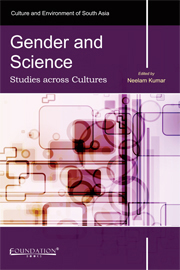Book contents
- Frontmatter
- Contents
- List of Contributors
- Acknowledgements
- Introduction: Reflections and Realities across Cultures
- Section I Approaches and Perspectives
- 1 Getting More Women into Science: Knowledge Issues
- 2 Gender Imbalance in Science: Cultural Similarities and Diferences
- 3 Gender and Technology
- 4 Gender, Science, and the Psychology of Science
- 5 Women and Minorities in Science: Discrimination and the Solution
- Section II Illustrative Examples
- Conclusion: The Persistent Patterns!
- Bibliography
- Index
5 - Women and Minorities in Science: Discrimination and the Solution
from Section I - Approaches and Perspectives
Published online by Cambridge University Press: 05 May 2013
- Frontmatter
- Contents
- List of Contributors
- Acknowledgements
- Introduction: Reflections and Realities across Cultures
- Section I Approaches and Perspectives
- 1 Getting More Women into Science: Knowledge Issues
- 2 Gender Imbalance in Science: Cultural Similarities and Diferences
- 3 Gender and Technology
- 4 Gender, Science, and the Psychology of Science
- 5 Women and Minorities in Science: Discrimination and the Solution
- Section II Illustrative Examples
- Conclusion: The Persistent Patterns!
- Bibliography
- Index
Summary
Women and minorities face problems in all stages and phases of their scientific life course. The taken-for-granted norms, the structure of society, especially the relationship between family and work, and the organisation of scientific institutions create a series of interrelated dilemmas for women in science that must be addressed in a comprehensive fashion. The solution surely includes changes in the society at large, for example, in gender relations of family and work that create a ‘triple burden’ for women in science (Gupta, 2002). But there can be no diversion of attention or shifting the blame from science to society. Any action to include women and minorities must start at home, within science and technology itself, rather than waiting for societal or generational change.
When scientists and technologists take up the issues of women in science, typically in response to the concerns about impending human capital shortages, the focus tends to be on the front end of the so-called ‘pipeline’ of scientific career progression. Too of ten, when the issue of lack of women and minorities is raised, the tendency within scientific institutions is to view the problem solely in terms of recruitment. Numerous programmes have been started to recruit students from elementary and high schools, and to encourage women and minorities to take an interest in science and engineering careers. However, many of those recruited do not pursue technical careers or face conditions that do not allow them to perform at their highest level (Lovitts, 1996).
- Type
- Chapter
- Information
- Gender and ScienceStudies across Cultures, pp. 76 - 92Publisher: Foundation BooksPrint publication year: 2012

